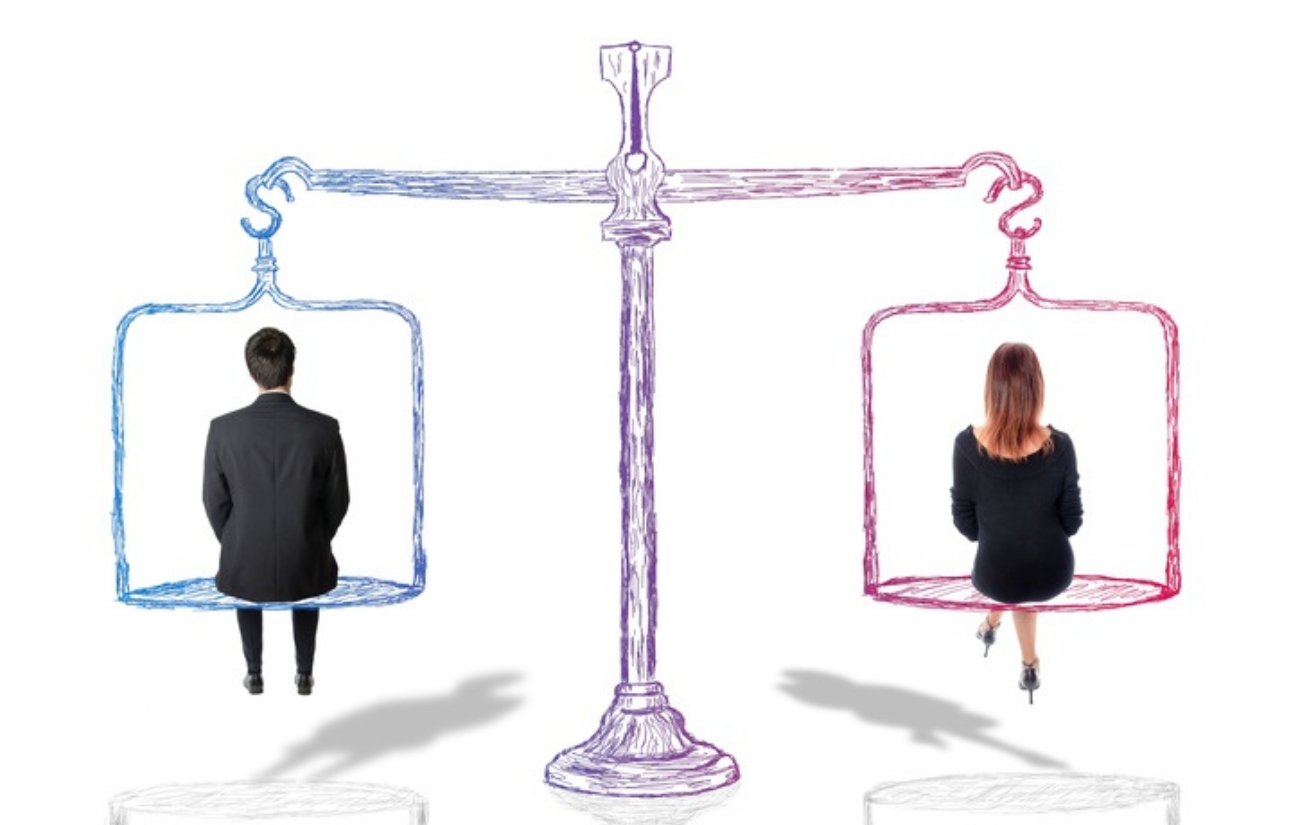
07 May Gender Equality: Ideas Worth Exploring
Equality woman man concept
Will we see gender equality in the workplace in our lifetime? As the mother of two teenage daughters I hope that they will find their passion in life and pursue it. I believe that by following your passion success will surely follow.
Unfortunately the reality is that no matter how ambitious or successful my daughters become, statistically speaking, they will be paid 28.7%* less then a man who is working the same hours and doing the same job. Worse yet, by the time they retire there super fund balance will be 52.8%** less than a man’s. We are a long way from gender equality in the workplace.
Until 1969 legislation in Australia allowed employers to pay women a minimum rate of 25% less than male employees. Despite the change in legislation and the establishment of Affirmative Action Agency, later called the Equal Opportunity in the Workplace Agency, the gender pay gap has continued. It was not until 2009, when an Australian House of Representatives Pay Equity Report called on the Commonwealth Government to elevate pay equity to be a clear objective of modern awards, that we started to see an improvement in the gender wage gap.
Where have we gone wrong as a society that despite legislation, women in the workforce are being judged by virtue of being female?
Our girls are now outperforming boys at school. At no time in history have so many women graduated from university. Women are accounting for 40% of all new appointments to ASX 200 boards in January 2016***. Women make up 46.2% of the work force in Australia****. Yet women experience inequality in the workplace and are still not being paid the same as men for doing the same job.
So what is the solution to creating gender equality?
- Sheryl Sandberg of Facebook and Google fame believes the solution is having more women in positions of leadership. See more in my book review on Lean In: Women, Work and the Will to Lead by Sheryl Sandberg.
- Women need to improve their salary negotiation skills.
- Change the institutional norms about what it means for a women in management to be ‘too masculine’ or ‘too feminine’.
- Policies around superannuation need to be reconsidered so men and women are not at a disadvantage when away from the work force to care for children and/or family. A lot of women in the workforce today are going to be living their old age in poverty, if the policies do not change.
- Let’s enforce strict penalties for companies who discriminate against women and pay less just because they are female.
I agree with Sheryl Sandberg that until we see more women in government and business leadership roles we will not see significant change. Furthermore, as women we need to encourage each other, to speak up and ‘lean in’ to leadership.
Please see below for the latest statistics from the Workplace Gender Equality Agency (Australian Government August 2016).
Workforce Participation
- Women comprise 46.2%**** of all employees in Australia. As a proportion of all employees, 24.8% are women working full-time and 21.4% are women working part-time.
- Women constitute 71.6% of all part-time employees, 36.7% of all full-time employees and 54.7% of all casual employees.
- The workforce participation rate for women is 59.3%, and for men is 70.4%.
Women in Leadership
- Women hold 14.2% of chair positions, 23.6% of directorships, as well as represent 15.4% of CEOs and 27.4% of key management personnel in Agency reporting organisations.
- One-quarter (25.1%) 17 of Agency reporting organisations have no key management personnel who are women.18 Real time statistics from the AICD19 reveal:
- 23.4% of directors in the ASX 200 are women in January 2016.
- Women account for 40.0% of new appointments to ASX 200 boards in January 2016***.
- 10.0% of ASX 200 companies do not have a woman on their board.
Economic Security
- The full-time average weekly ordinary earnings for women are 16.2% less than for men.
- Among non-public sector organisations with 100 or more employees, the gender pay gap for full-time annualised base salary is 19.1%, and for full-time annualised total remuneration is 24.0%.
- The full-time average hourly earnings for women are 13.9% less than men’s full-time average hourly earnings.
- The gender pay gap in ASX 200 organisations is 28.7%*.
- Average graduate salaries for women are 9.4% less than for men. When factors such as personal characteristics, occupation, industry and education are accounted for, average graduate salaries for women are 4.4% less than for men.
- Average superannuation balances for women at retirement are 52.8%** less than those for men.
- Of people aged 65 years and older receiving the aged pension, 55.6% are women.
Let’s work together, men and women, to make the workplace a better and fairer place for our daughters. Stop the discrimination of women in the workplace now.


Pingback:Lean In by Sheryl Sandberg: Book Review - Ideas Worth Exploring
Posted at 18:18h, 30 May[…] will have a equal chance at a leadership role with equal pay in both government and business. See Equality in the Workplace: Ideas Worth Exploring for the latest statistics from the Australian […]
Pingback:Option B by Sheryl Sandberg: Book Review - Ideas Worth Exploring
Posted at 20:56h, 30 June[…] support to single parents. At a minimum address the disparity between male and female wages. See here for the current statistics from the Workplace Gender Equality Agency […]
Pingback:Lean In by Sheryl Sandberg: Book Review - Kathy Joyce
Posted at 17:56h, 01 March[…] will have a equal chance at a leadership role with equal pay in both government and business. See Equality in the Workplace: Ideas Worth Exploring for the latest statistics from the Australian […]